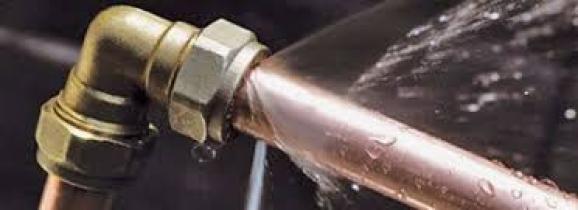Exploring the Top Factors for Water Leaks in Your Home
Exploring the Top Factors for Water Leaks in Your Home
Blog Article
What're your thoughts on How to detect water leaks in your home?

Leaks not just create waste of water but can also cause unnecessary damage to your residence as well as advertise undesirable organic development. Unfortunately, water leaks might go unnoticed since a lot of the pipework in our home is concealed. By understanding and also looking for daily situations that create leakages, you can shield your home from future leakages and unneeded damage. Today, we will look at 6 leak causes that may be triggering your pipelines to trickle.
Intruding roots
Most water leakages start outside your house rather than inside it. If you notice a sudden decline in water stress, claim in your faucet, require time to head out and examine your backyard. You may notice wet spots or sinkholes in your backyard, and that could suggest that tree roots are getting into water lines causing water to seep out. You can have your plumber look for intrusion, especially if you have trees or hedges near your home.
Rusty water supply
This may be the reason of discoloration or bending on your water pipelines. If our plumbing system is old, take into consideration replacing the pipes considering that they are at a greater threat of corrosion than the newer models.
Faulty Pipeline Joints
Pipeline joints can wear away over time, resulting in water leaks. If you have noisy pipes that make ticking or banging sounds, specifically when the warm water is transformed on, your pipeline joints are possibly under a whole lot of pressure.
Instant temperature adjustments.
Extreme temperature changes in our pipelines can trigger them to broaden as well as contract unexpectedly. This growth and also tightening may create fractures in the pipelines, particularly if the temperature are listed below freezing.
Poor Water Connectors
At times, a leakage can be triggered by loose tubes as well as pipelines that provide your appliances. Usually, shifting is what creates the loose water Links. You could discover when it comes to a cleaning maker, a hose might spring a leak as a result of trembling during the spin cycle. In case of a water connections leak, you might observe water running directly from the supply line or pools around your appliances.
Blocked Drains
Clogged drains could be aggravating as well as inconveniencing, yet they can in some cases wind up causing an overflow bring about burst pipelines. Maintain removing any type of products that may decrease your drains that might obstruct them to avoid such hassles.
All the above are causes of leakages yet not all water leakages result from plumbing leaks; some leakages might come from roofing leaks. All leakages should be fixed instantly to avoid water damage.
Leaks not just cause waste of water but can additionally cause unnecessary damage to your house and also promote unwanted natural growth. By looking and also recognizing for everyday situations that trigger leakages, you can safeguard your residence from future leakages and also unneeded damages. Today, we will certainly look at 6 leakage causes that may be triggering your pipelines to leak.
At times, a leakage can be caused by loose hose pipes and pipes that supply your devices. In case of a water links leak, you may discover water running directly from the supply line or puddles around your home appliances.
How To Check For Water Leak In Your Home
How To Check for Leaks
The average household's leaks can account for nearly 10,000 gallons of water wasted every year and ten percent of homes have leaks that waste 90 gallons or more per day. Common types of leaks found in the home are worn toilet flappers, dripping faucets, and other leaking valves. These types of leaks are often easy to fix, requiring only a few tools and hardware that can pay for themselves in water savings. Fixing easily corrected household water leaks can save homeowners about 10 percent on their water bills.
To check for leaks in your home, you first need to determine whether you're wasting water and then identify the source of the leak. Here are some tips for finding leaks:
Take a look at your water usage during a colder month, such as January or February. If a family of four exceeds 12,000 gallons per month, there are serious leaks.
Check your water meter before and after a two-hour period when no water is being used. If the meter changes at all, you probably have a leak.
Identify toilet leaks by placing a drop of food coloring in the toilet tank. If any color shows up in the bowl after 10 minutes, you have a leak. (Be sure to flush immediately after the experiment to avoid staining the tank.)
Examine faucet gaskets and pipe fittings for any water on the outside of the pipe to check for surface leaks.
Undetected water leaks can happen without the home or business owner even realizing. If you suspect a water leak, but not able to find the source. It is time to contact a professional water leak detection service, The Leak Doctor.
How To Find a Water Leak In Your Home
https://www.leakdoctor.com/blog/How-To-Check-For-Water-Leak-In-Your-Home_AE197.html

I'm just very eager about Common Water Leaks In House and I'm hoping you liked my blog entry. Do you know somebody else who is enthusiastic about How to detect water leaks in your home? Take a moment to share it. I cherish reading our article about How Fast Water Damage Can Ruin Your Home.
Get the best, ring us! Report this page